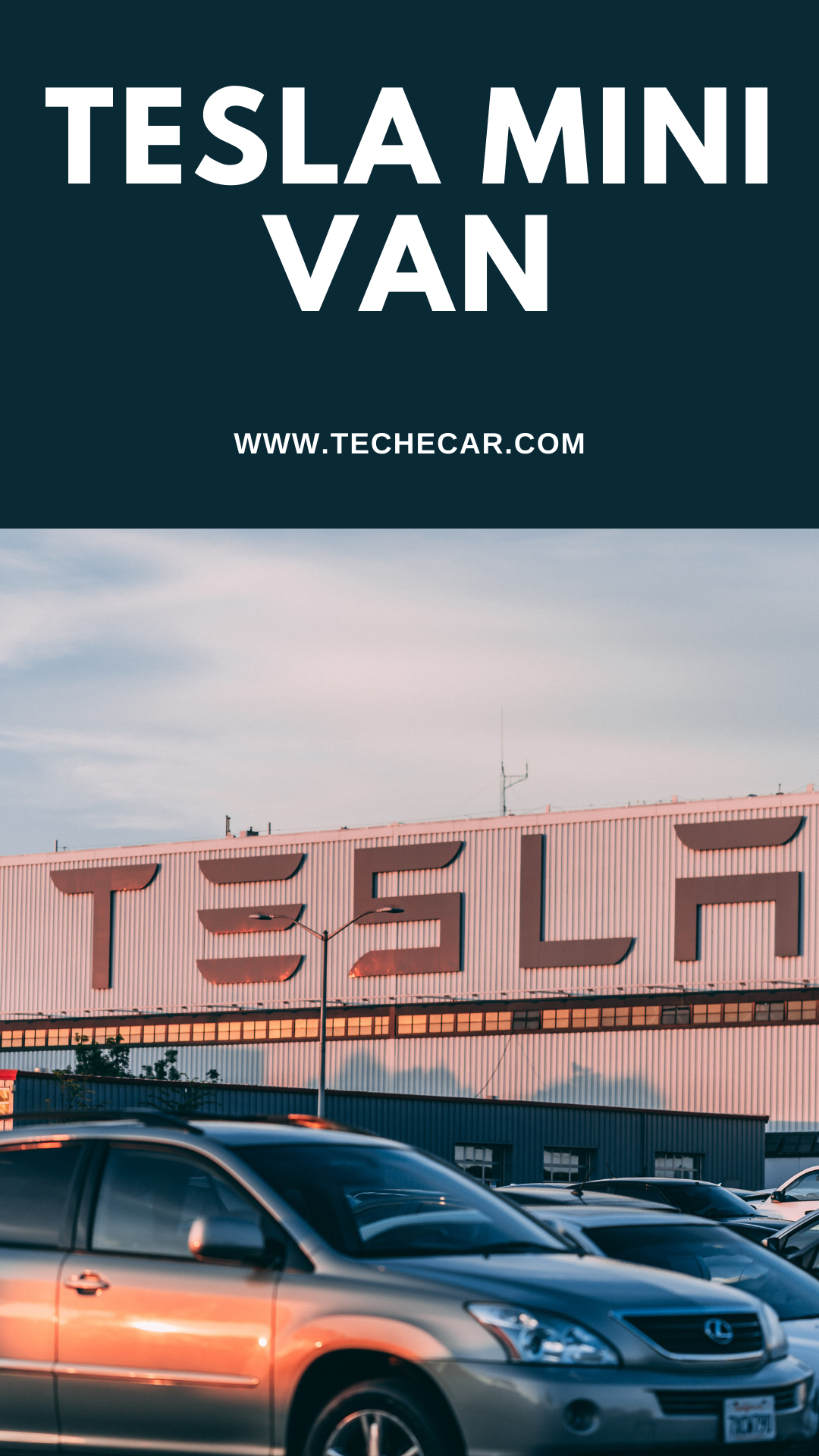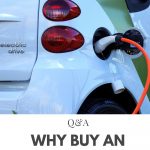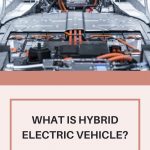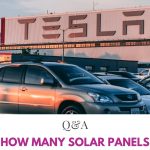Tesla Mini Van
Topic: Tesla Mini Van


Tesla Mini Van
Tesla’s “Master Plan, Part Deux” includes a pickup, a compact SUV, and even a semi-truck among its future vehicles. On the other hand, Tesla may overlook a crucial market niche: the Minivan.
Although minivan sales have fallen as the crossover has grown in popularity, families continue to rely on the Minivan’s unrivalled interior space and downright handiness for transporting the kids and their belongings.
We decided to create a rendering of a Tesla minivan with that in mind. The concept is intriguing, regardless of how unlikely it is. Consider this: the battery pack would be encased in the flat floor, with very small electric motors at either end, allowing for practically unrestricted internal volume. Its “frunk” provides storage space away from the passenger cabin. There would also be no more stinky, greasy gas stations to deal with. Isn’t that wonderful, mom?
Tesla’s Minivan would most likely be built on the same chassis as the Model X SUV. The wheelbase might be somewhat expanded to accommodate a wider third row and the anticipated sliding rear doors.
Perhaps Tesla developers will develop a secret track system for those doors, removing the unsightly gap in the rear quarter panels. There is no limit to the amount of invention that can be done.
EXTERIOR
So, the nose wasn’t difficult to come up with. Tesla designers would almost certainly use the corporate appearance to maintain a link to the company’s other goods. Tesla will have two sedans, an SUV, a pickup truck, a city bus, and a semi-truck by this time.
Our rendering shows that the Model X and the Minivan have some fundamental design differences.
The Model X is virtually a minivan already. Replace the Falcon doors and slanting rear roof with something more family-friendly, and you’ve got yourself a minivan. That is the concept here.
Our rendering shows that the Model X and the Minivan have some fundamental design differences. The A-pillars are moved forward in the front, expanding the passenger capacity and giving the vehicle a minivan appearance.
A familiar handle on the sides controls the electronically actuating sliding doors. The primary door support track could be concealed within the internal door panel.
The inside panel appears normal when the door is closed, but when it is opened, a thin piece of the panel arches open, showing a tracking mechanism that travels along a hinge hidden in the C-pillar. Sure, it’s a stretch, but so are the Falcon Wing doors.
INTERIOR
Nothing less than a Tesla-style cabin should be expected. Because its fully digital gauge cluster and large infotainment screen will remind drivers of the Model X. Like past Tesla devices, practically all controls will be housed in the tablet. Autopilot and other high-tech capabilities will be available.
In a two + two + three configuration, seven passengers will travel. The centre captain’s seats will slide fore and aft, giving the third-row bench more legroom. The Tesla Minivan will need to be slightly wider than the Model X since the third row will seat three people.
The Model X’s rearmost bench only sits two people. This distinction in seating layouts will aid in distinguishing the Minivan from the Model X. It will also create extra interior space. This is especially true of the centre console in front of the front passengers. Mom now has a place to put her huge purse.
Other features to look for include a vacuum cleaner from Honda and Chrysler, several cup holders and storage compartments, and a rear-seat entertainment system.
DRIVETRAIN
This Tesla minivan will, of course, be all-electric. It will be available in several battery sizes as well. Tesla is unlikely to create a P90D variant; given minivans aren’t designed to be quick. As a result, the Minivan will most likely be available in 60D, 75D, and 90D models, similar to the Model X.
Most soccer moms will lust after the base 60D, an economical entry-level model. This powertrain provides:
- The Model X has a range of 200 miles.
- A six-second sprint to 60 mph.
- A top speed of 130 mph.
- For a minivan, those are extremely acceptable figures. If you choose the 75D, the range increases to 237 miles while the performance stats remain the same.
The 90D is ideal for greater power or a longer range. It has a range of 257 miles on electricity and a 0-to-60 mph time of 4.8 seconds. That outperforms any existing minivan in terms of performance. The Tesla will come standard with all-wheel drive, making it a viable alternative for northern areas.
PRICES
The base 60D version of Tesla’s Minivan is expected to cost roughly $45,000, putting something among the Model 3 and the Model S. The 75D will set you back around $53,000, while the high-spec 90D would set you back around $68,000. The prices would rise if extras like Autopilot, the Premium Package, Smart Air Suspension Package, Subzero Weather Package, Ultra High Fidelity Sound Package, and Towing Package were included.
COMPETITION
Hybrid Chrysler Pacifica
With the debut of the Pacifica Hybrid – the first-ever hybrid minivan – Chrysler is reinventing the minivan segment for the 2017 model year. Based on the new-for-2016 Pacifica minivan, this plug-in hybrid provides a more efficient alternative while still allowing parents to transport their children.
CONCLUSION
It has the same 3.6-litre Pentastar V-6 engine as the conventional Pacifica, but with an Atkinson combustion cycle and a cooled exhaust gas recirculation system for improved economy.
A 16 kW Lithium-Ion battery pack powers two electric motors integrated within the transmission. Its all-electric range is only 30 miles, but that’s more than enough for most short trips around town. The V-6 takes over when the battery is exhausted. The batteries may be fully recharged in under two hours using a Level 2 Charger.
According to Chrysler, the Pacifica Hybrid is expected to get 80 MPGe in the city. The starting price is expected to be around $35,000.
Tesla Mini Van
This Is What the Model XL Might Look Like If Tesla Made a Minivan
Tesla will undoubtedly experiment with numerous vehicle platforms in the coming years, and one intriguing concept, according to Drivable Designs, would be a Model XL minivan.
Modern minivans are based on a passenger car platform and have a lower body than full-size vans, which implies Elon Musk could use the existing Model S or Model X as the base platform.
Apart from sliding doors, the Model XL would have a cargo box on top and potentially a solar panel system for times you want to camp out. Did you know that the name “minivan” was coined in North America to distinguish smaller passenger cars from full-sized vans?
The term was first used in 1959, but it wasn’t until the 1980s that it became widely accepted.
Should Tesla build a Model X-based electric minivan?
Tesla CEO Elon Musk discussed two new segments Tesla is trying to electrify in “Tesla Master Plan Part 2”:
Aside from consumer automobiles, two different electric vehicles are required: heavy-duty trucks and high-density urban transportation. Both are still in the early stages of development at Tesla and are expected to be unveiled next year. We believe the Tesla Semi will significantly reduce the cost of cargo transportation while also improving safety and making it a lot of fun to drive.
Tesla eventually announced the Tesla Semi, a “heavy-duty truck,” but no vehicle for “high passenger-density urban transportation.” Musk has mentioned developing an electric minibus based on the Model X, but it never materialised.
It’s the only electric vehicle part of Tesla’s Master Plan but hasn’t been revealed yet. Several designers have attempted to envisage what a Model X minibus or van may look like, and Driveable Designs recently released an intriguing rendering:
Electrek’s Opinion
While I agree that Tesla should concentrate on its current car efforts, I believe they should devote some resources to developing a Tesla minivan as soon as possible. So I’m voting “yes” for a variety of reasons. Given the Model X’s starting price of $85,000, building an electric minivan on it may seem like a bad idea, but I believe Tesla could considerably reduce the cost.
The foundation and powertrain remain the same, but the Falcon Wing doors are replaced with ordinary sliding doors. You can probably get away with a simpler solution instead of the work-of-art backseats.
Tesla can also get rid of the self-presenting doors on the Model X. The company will need to revamp the body, and we know that Tesla has made significant progress in this area thanks to the Model Y. It’s also possible that it’ll find some cost savings there.
As a result, I believe Tesla can lower the price to around $65,000, the same as the new Mercedes-Benz EQV. Tesla’s efficiency magic would certainly result in a superior product with reduced operating costs. As a result, I’m in the market for a vehicle like this.
With an electric Model X-based van with a range of roughly 300 miles, Tesla would make a killing in the fleet sector. It would hasten electrification in the shuttle industry and be a no-brainer as a new vehicle for Uber XL drivers, particularly in areas where incentives are available.
Finally, it would be an excellent choice for Tesla Network, the automaker’s future self-driving ride-sharing service. I could even envision the vehicle being employed in the Loop system created in Las Vegas by the Boring Company. There are so many great applications for the vehicle, and Tesla is well aware of this, as the firm and Elon have discussed it previously.
The Tesla Cybervan, a futuristic-looking vehicle, will debut in 2026.
Tesla is on a roll right now. It is building two new Gigafactories, outperformed expectations with a healthy profit in Q1 2021, and demand for its vehicles is stronger than ever. Elon Musk, Tesla’s CEO, predicts that by 2022, the Tesla Model Y will be the best-selling vehicle on the planet.
Not bad for a firm that has only been around for 18 years yet is now the most valuable automaker on the earth. Tesla will have a nearly full passenger vehicle lineup once the Cybertruck and second-generation Roadster production. Because one piece is still missing: a van, we call “almost complete.”
A minivan, to be precise. Although we’ve known that Tesla has been working on a commercial van for about a year, Musk has stated publicly that he wants to introduce an all-electric minivan. It appears to be taking place.
Tesla’s minivan is expected to appear in late 2026, according to an IHS Markit industry report obtained by Rivian Forums, and it will be constructed alongside the Cybertruck at the Austin, Texas factory.
Although contacting Tesla directly for comment is futile due to the company’s lack of a public relations staff, the source of this storey is usually fairly accurate when it comes to future vehicle forecasts.
The 2026 Tesla Cybervan (the name sounds awesome) could take influence directly from a particular divisive truck, according to these exclusive CarBuzz illustrations.
That’s not necessarily a negative thing because Musk will almost certainly want to avoid a minivan with a traditional appearance. One of the main objectives is to optimise cabin and cargo space, which should be attainable because of the floor-mounted battery pack and extended wheelbase.
Minivans must feature sliding doors and the third row of seats. The falcon doors on the Model X seem amazing, but they can be troublesome. A flat roof will be an added plus because it lets owners install multiple cargo containers for family road vacations. Instead of a tailgate, we’d want to see barn doors.
An AWD Tesla minivan with about 400 miles of range, sufficient power, and a sensible interior layout may forever revolutionise the minivan segment, even with extreme styling.
People Also Ask:
Is there a Tesla minivan?
It appears to be taking place. Tesla’s minivan is expected to appear in late 2026, according to an IHS Markit industry report obtained by Rivian Forums, and it will be constructed alongside the Cybertruck at the Austin, Texas factory.
How much is a Tesla mini van?
The model’s price ranges from $134,900 to $191,730, depending on the year it was produced.
Tesla model x minivan?
Though the Tesla Model X offers a high level of versatility, removing the falcon-wing doors and replacing them with minivan-style sliding doors would improve usability, access, ease of entry/exit, parking in tight spaces, and more.
Recommended Articles:
Eaton Electric Vehicle Charging Station
Solar Electric Vehicle Charger
On Board Charger Electric Vehicle
Georgia Electric Vehicle Tax Credit






[…] Tesla Mini Van […]